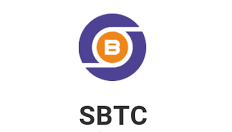Super Bitcoin – A Bitcoin Fork with Smart Contracts & 8MB
Table of Contents

Super Bitcoin is a Mineable Token. Are you curious about expanding your crypto portfolio with other mineable tokens or alternative coins? At Niftyfinances, you’ll find in-depth information, guides, and the latest updates on various promising crypto projects. Whether you’re a miner or an enthusiast looking for unique opportunities, Niftyfinances is your go-to platform to discover what’s next in decentralized finance!
Bitcoin is great—but can it be faster, smarter, and more scalable? That’s what Super Bitcoin (SBTC) aims to achieve! 🚀 As a hard fork of Bitcoin launched in 2017, SBTC enhances the original protocol by increasing block size and integrating smart contracts. But how does it compare to Bitcoin, and is it still relevant today? Let’s explore!

What Is Super Bitcoin (SBTC)?
Super Bitcoin (SBTC) is a hard fork of Bitcoin (BTC) designed to improve Bitcoin’s scalability, transaction speed, and functionality. Launched in December 2017 at block 498888, SBTC aimed to bring faster transactions, lower fees, and smart contract support, which Bitcoin lacked at the time.
Why SBTC Was Created: Solving Bitcoin’s Limitations
Bitcoin is the most recognized cryptocurrency, but it has several challenges that make it difficult for mass adoption. The developers behind SBTC wanted to address these issues by enhancing Bitcoin’s capabilities.
Slow Transactions
Bitcoin transactions can take several minutes or even hours during network congestion. SBTC was designed to increase transaction speed by implementing larger blocks and advanced scalability solutions.
High Transaction Fees
As Bitcoin became more popular, network congestion led to higher transaction fees. SBTC reduces fees by allowing more transactions per block, improving cost efficiency for users.
Lack of Smart Contracts
Unlike Ethereum, Bitcoin does not have built-in smart contract support, limiting its ability to handle decentralized applications (dApps). SBTC introduces smart contract functionality, allowing developers to build on its blockchain.
These upgrades make SBTC a more advanced and user-friendly version of Bitcoin, while still maintaining decentralization and security.
Key Differences Between SBTC and BTC
SBTC retains Bitcoin’s core framework but introduces new features to enhance usability and efficiency.
1. Smart Contract Integration
Bitcoin does not support smart contracts, but SBTC includes a scripting system that allows developers to create decentralized applications. This makes SBTC more versatile than BTC.
2. Increased Block Size for Faster Transactions
Bitcoin has a 1MB block size, which limits the number of transactions processed per block. SBTC increases the block size to 8MB, enabling faster transactions and lower fees.
3. Lightning Network Support
SBTC integrates Lightning Network technology, which allows instant, low-cost transactions by processing transactions off-chain before settling on the main blockchain.
4. Hybrid Proof of Work (PoW) Mechanism
SBTC uses Bitcoin’s PoW mining system but introduces additional security and efficiency improvements to enhance network stability.
5. Airdrop Distribution Model
Unlike Bitcoin, which must be mined or purchased, SBTC was airdropped to BTC holders at a 1:1 ratio during its launch. This gave BTC users access to SBTC without requiring additional investment.
Market Performance: How SBTC Has Evolved Since Its Launch
SBTC had an eventful launch, but like many Bitcoin forks, it has faced challenges in adoption and market demand.
Initial Market Reaction
- After launching in December 2017, SBTC gained immediate attention from traders and investors.
- Prices surged due to high speculation, as users expected it to become a viable alternative to Bitcoin.
Current Status
- Over time, SBTC struggled to gain mainstream adoption as Bitcoin and other established cryptocurrencies continued to dominate the market.
- Many investors and developers focused on Bitcoin’s upgrades, such as SegWit and Taproot, reducing the need for forked alternatives.
Future Potential
- If SBTC receives more developer support and ecosystem growth, it could become a strong alternative blockchain for smart contracts and fast transactions.
- Its ability to process transactions quickly and at a low cost makes it a possible payment solution for businesses.
Super Bitcoin (SBTC) was designed to enhance Bitcoin’s technology by adding smart contracts, larger blocks, and faster transactions. While it has not gained widespread adoption, it serves as an example of how Bitcoin’s limitations can be improved. Whether SBTC will grow in popularity depends on future development, market demand, and real-world use cases.

Key Features – Bigger Blocks & Smart Contracts
Super Bitcoin (SBTC) is a hard fork of Bitcoin (BTC) designed to improve transaction speed, scalability, and functionality. By increasing block size, integrating smart contracts, and supporting the Lightning Network, SBTC aims to provide a more efficient and programmable version of Bitcoin. These upgrades make it easier for users to send transactions quickly and for developers to create decentralized applications (dApps).
Increased Block Size for Faster Transaction Processing
One of the biggest improvements SBTC brings is a larger block size, which directly impacts transaction speed and cost efficiency.
How Does Block Size Affect Transactions?
- Bitcoin has a 1MB block size, which limits the number of transactions that can be processed per block.
- When many people send BTC at the same time, transactions slow down, and fees increase due to network congestion.
- SBTC increased the block size to 8MB, allowing more transactions to be included per block.
What Are the Benefits of a Larger Block?
- Faster Confirmations: Since more transactions fit into each block, users experience quicker processing times.
- Lower Fees: Less congestion means reduced transaction costs, making SBTC a more affordable option for daily transactions.
- Better Network Efficiency: The blockchain can handle a higher volume of transactions, improving scalability for future growth.
With this upgrade, SBTC provides a faster and more cost-effective solution compared to Bitcoin, making it a better choice for users who need quick payments.
Smart Contract Integration: Bringing Programmability to SBTC
Another major difference between Bitcoin and SBTC is the introduction of smart contracts. While Bitcoin focuses on being a store of value, SBTC adds programmability, allowing developers to create self-executing contracts on the blockchain.
What Are Smart Contracts?
- Self-executing agreements that automatically run when conditions are met.
- Eliminates the need for middlemen, making transactions more secure and efficient.
- Used in decentralized applications (dApps), DeFi (Decentralized Finance), and NFTs.
How Does SBTC Benefit from Smart Contracts?
- Supports dApps: Developers can build applications directly on the SBTC blockchain.
- Automated Payments: Transactions can be programmed to execute automatically under specific conditions.
- Enhanced Use Cases: SBTC can be used for lending, trading, and digital assets, expanding its utility beyond simple payments.
By incorporating Ethereum-like smart contracts, SBTC makes Bitcoin’s technology more functional and developer-friendly.
Lightning Network Compatibility for Instant Payments
One of Bitcoin’s biggest challenges is slow transaction speeds, especially during network congestion. To solve this issue, SBTC integrates the Lightning Network, a second-layer solution that allows instant payments with minimal fees.
How Does the Lightning Network Work?
- Instead of recording every transaction on the blockchain, Lightning creates off-chain payment channels.
- Transactions between two parties happen instantly within these channels.
- Once completed, the final transaction is settled on the main blockchain, reducing congestion.
Why Is Lightning Network Important for SBTC?
- Instant Transactions: Payments settle in seconds instead of minutes or hours.
- Lower Fees: Since fewer transactions are recorded on-chain, users pay less.
- Scalability: SBTC can handle thousands of transactions per second, making it better suited for global adoption.
This feature makes SBTC a strong competitor to traditional payment systems, offering both speed and cost-efficiency.
Improved Scalability Compared to Bitcoin
Bitcoin’s limited block size and increasing demand have led to scalability issues, where transaction times and fees increase as more people use the network. SBTC addresses these problems through multiple enhancements.
What Makes SBTC More Scalable?
- Larger Block Size: More transactions per block means faster processing and lower costs.
- Lightning Network: Moves frequent transactions off-chain, preventing network congestion.
- Smart Contracts: Automates processes, reducing manual intervention and improving efficiency.
Why Scalability Matters
- If a cryptocurrency cannot handle mass adoption, it becomes too slow and expensive for everyday use.
- SBTC’s upgrades ensure that as more users join, the network can process transactions efficiently.
By combining bigger blocks, smart contracts, and Lightning Network support, Super Bitcoin offers a more scalable and practical blockchain compared to Bitcoin.
Super Bitcoin (SBTC) brings key improvements to Bitcoin’s original design, making transactions faster, cheaper, and more functional. With its larger block size, smart contracts, and Lightning Network integration, SBTC provides a more efficient and scalable blockchain. While Bitcoin remains the most dominant cryptocurrency, Super Bitcoin serves as an innovative alternative that enhances usability and transaction processing for a broader range of applications. Whether SBTC will gain mainstream adoption depends on developer support and real-world use cases, but its technological advancements offer a glimpse into Bitcoin’s potential future evolution.

How to Buy, Store & Use Super Bitcoin (SBTC)
Super Bitcoin (SBTC) is a hard fork of Bitcoin designed to improve transaction speed, scalability, and functionality. If you want to invest in Super Bitcoin or use it for transactions, you need to know where to buy it, how to store it safely, and where it can be used. This guide explains everything you need to get started with SBTC.
Where to Buy SBTC Tokens:
To buy SBTC, you need to find an exchange that lists it for trading. Since Super Bitcoin is not as widely available as Bitcoin, it is important to choose a platform that offers secure and reliable trading options.
Top Exchanges for Buying SBTC
- Centralized Exchanges (CEXs): Some cryptocurrency exchanges list SBTC, allowing you to trade it against Bitcoin (BTC), Ethereum (ETH), or stablecoins.
- Decentralized Exchanges (DEXs): If SBTC is available on a DEX, you can trade it in a peer-to-peer manner without relying on a third party.
- Peer-to-Peer (P2P) Trading: Some platforms allow direct trading between users, giving you the option to buy SBTC directly from a seller.
Steps to Buy SBTC
- Choose an Exchange: Sign up for an exchange that supports Super Bitcoin trading.
- Verify Your Identity: Some platforms require identity verification for security reasons.
- Deposit Funds: Use BTC, ETH, or fiat currency to fund your exchange account.
- Buy SBTC: Place a market or limit order to purchase Super Bitcoin.
- Withdraw to a Secure Wallet: Transfer your Super Bitcoin to a private wallet for safety.
Best SBTC Wallets: How to Securely Store Your Super Bitcoin
After buying SBTC, storing it in a secure wallet is essential to protect your funds from hacks and theft. There are several types of wallets you can use.
Types of SBTC Wallets
- Hardware Wallets – Physical devices that store your SBTC offline, protecting it from cyber threats.
- Examples: Ledger, Trezor
- Software Wallets – Desktop or mobile applications that provide convenient access to your SBTC.
- Examples: Electrum SBTC, Trust Wallet
- Paper Wallets – A printed or written copy of your private keys that is stored offline for security.
- Exchange Wallets – Keeping your SBTC on an exchange is possible but not recommended for long-term storage due to security risks.
Best Practices for Wallet Security
- Use Two-Factor Authentication (2FA) for extra protection.
- Back up Your Private Keys in a safe place.
- Avoid Public Wi-Fi when accessing your wallet.
- Keep Software Updated to prevent vulnerabilities.
Real-World Use Cases: Where Can You Use SBTC?
SBTC is not just for trading—it can be used for various real-world applications, making it a practical cryptocurrency.
1. Fast & Low-Cost Payments
With its larger block size and Lightning Network support, SBTC can be used for quick and affordable transactions, making it useful for everyday spending.
2. Smart Contract-Based Applications
Developers can build dApps (decentralized applications) on SBTC’s blockchain, enabling financial services, lending platforms, and automated payments.
3. Cross-Border Transactions
SBTC’s lower fees and faster confirmations make it a great option for international money transfers, reducing costs compared to traditional banking systems.
4. Investment & Trading
Many traders buy and hold SBTC as a long-term investment, believing in its future growth. It can also be traded for other cryptocurrencies or fiat money.
5. Merchant Adoption
As SBTC adoption grows, more businesses may begin accepting it as payment for goods and services, just like Bitcoin.
Super Bitcoin (SBTC) offers significant improvements over Bitcoin, making it a faster, more efficient, and programmable cryptocurrency. You can buy SBTC on select exchanges, store it securely in a hardware or software wallet, and use it for transactions, trading, and smart contract applications. With its lower fees and enhanced scalability, SBTC has the potential to become a widely adopted cryptocurrency for both individuals and businesses.
Super Bitcoin Mining & Network Security
Super Bitcoin (SBTC) is a hard fork of Bitcoin designed to improve scalability and functionality. Like Bitcoin, SBTC relies on a consensus mechanism to validate transactions and secure the network. This guide explores SBTC mining, its rewards, and its security model.
Can You Mine Super Bitcoin? Understanding SBTC Mining
Yes, Super Bitcoin uses Proof of Work (PoW) mining, similar to Bitcoin. This means miners solve complex cryptographic puzzles to add new blocks to the blockchain and receive SBTC rewards.
Key Aspects of SBTC Mining
- Mining Algorithm: SBTC uses the SHA-256 algorithm, the same as Bitcoin.
- Mining Hardware: Miners can use ASIC (Application-Specific Integrated Circuit) devices, which are highly efficient for SHA-256 mining.
- Block Time: SBTC maintains a 10-minute block time, just like Bitcoin.
To mine SBTC, users must join a mining pool or mine individually, but competition is high due to the strong mining power required.
How SBTC’s Consensus Mechanism Works
SBTC’s consensus mechanism follows Bitcoin’s Proof of Work (PoW) model but integrates improvements for efficiency and security.
Key Features of SBTC’s Consensus Model
- Decentralized Mining: The network remains decentralized by distributing mining power among different participants.
- Block Size Increase: SBTC’s 8MB block size allows more transactions per block, reducing congestion.
- Lightning Network Support: Enhances transaction speed while reducing the burden on miners.
By following Bitcoin’s secure and tested PoW model, SBTC ensures network stability while allowing faster and more efficient transactions.
Comparing SBTC’s Mining Rewards to Bitcoin
Super Bitcoin follows a block reward system similar to Bitcoin, meaning miners earn SBTC for validating transactions.
Mining Rewards Breakdown
- Initial Reward: When SBTC launched, its block reward was similar to Bitcoin’s structure.
- Halving Events: SBTC undergoes halving events, reducing miner rewards over time to control inflation.
- Profitability: Since SBTC has a smaller market compared to Bitcoin, mining profitability depends on market demand and mining difficulty.
While SBTC mining rewards may not be as high as Bitcoin’s, its lower transaction fees and faster confirmation times make it an attractive alternative.
Security Considerations & Decentralization of SBTC
Security is a major concern for any cryptocurrency. SBTC uses Bitcoin’s tried-and-tested security measures while introducing additional enhancements.
How SBTC Ensures Security
- Strong Encryption: SHA-256 provides robust encryption, making attacks difficult.
- Decentralized Network: No central authority controls SBTC, ensuring resistance to censorship.
- Mining Difficulty Adjustment: The difficulty level changes based on mining power, preventing attacks.
Decentralization Benefits
- Prevents Double Spending: Transactions are verified by multiple nodes.
- Resistant to Attacks: High mining power makes 51% of attacks unlikely.
- Transparent & Open-Source: Anyone can audit SBTC’s blockchain for security.
Super Bitcoin mining process follows Bitcoin’s secure and decentralized PoW model but improves scalability through larger block sizes and Lightning Network integration. Miners can earn rewards, but profitability depends on market conditions. SBTC maintains strong security through decentralized mining and encryption, making it a promising option for those interested in efficient and secure blockchain transactions. Super Bitcoin (SBTC) was designed to enhance Bitcoin with smart contracts and improved scalability. While it introduced bigger blocks and Lightning Network integration, market interest has declined over the years.